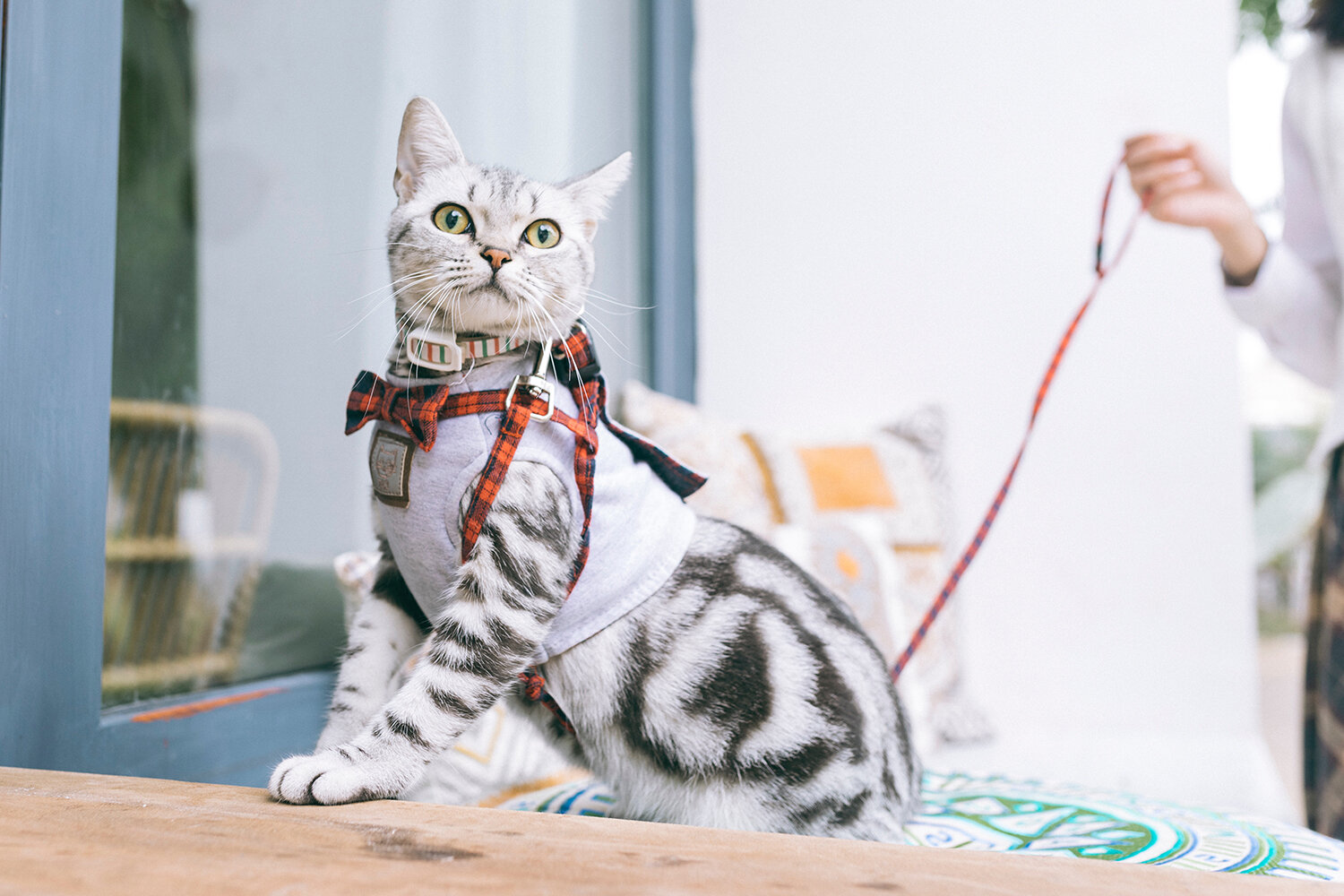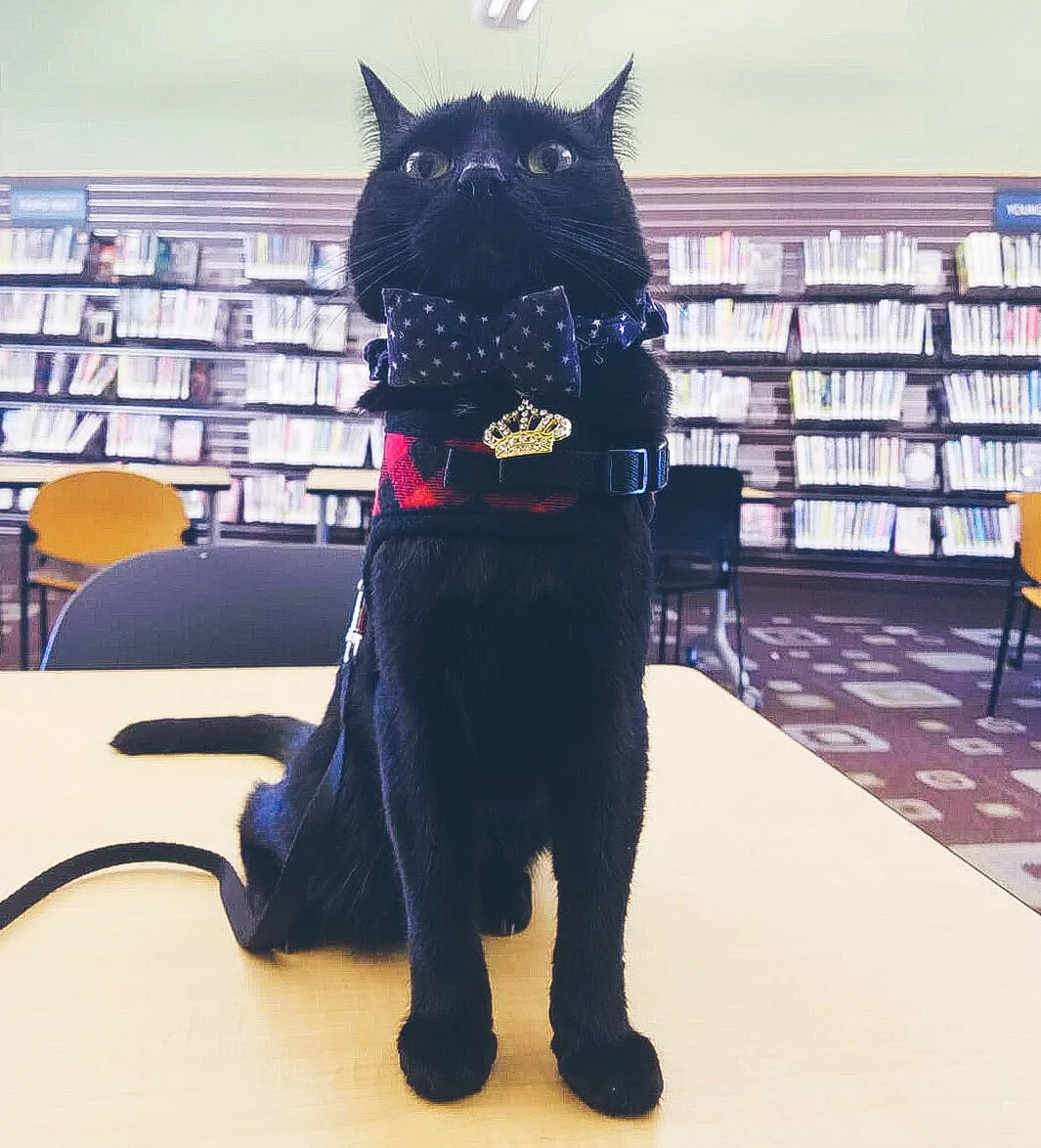Helping our cats adjust to the new normal, after social distancing
For many of us, staying at home has become the new normal during self-isolation due to COVID-19. Working from home in our makeshift offices. Zoom calls to connect with colleagues and friends. Weekends spent making home interesting with new arts and crafts. And of course, all that Netflix!
And while our kitties were surprised and confused at first, they have got used to this. So much so that they love having their humans around.
They love being the background (or the foreground) of our Zoom calls. They love sitting next to us as we work on our computers or veg out on the couch. And they love “supervising” our new arts and crafts or baking projects.
But soon, we’ll be going back to normal, or whatever the new normal is. Going back to commuting to work. Spending more time away from home. Seeing our friends face to face, rather than through screens.
And this means that our kitties will need to get used to being on their own for long periods of time again.
Some cats may love it, but chances are, a lot of cats will be bored. They may not have the enrichment and the fun they had being with their humans all the time. Even if our cats spend their time snoozing next to or near us – they’re probably still enjoying that companionship.
And as you start going out and about more, it is likely that your cat will miss you. Perhaps they’ll suffer from separation anxiety. Or they will become so bored that they’ll be destructive, pulling your house apart for their entertainment.
So while we may not have had the green light to stop social distancing, we can start preparing our kitties for that time. When we will be going back to normal, or whatever the new normal looks like.
Start taking short trips away from home, without your cat
To help your cat get used to not having you at home all the time, start taking short trips away from home without them. And if you have the luxury to do so, slowly increase the amount of time you are away from home.
A 10-minute walk around the block. Then a couple of days later, take 20-30 minutes running errands. Then an hour doing grocery shopping.
This will help your cat realise that you do come back to them after these trips. And gives them the opportunity to fill in those hours without you.
Keep their indoor environment fun
Like we found that our cats were bored & destructive when we started social distancing, they will be bored when we start leaving them at home by themselves again.
And show this by being destructive or a little lackluster.
But we can keep them entertained and help nip that boredom in the bud.
Puzzles
During social distancing for COVID-19, human puzzle shops were running out of stock. It makes sense because puzzles are a great way to entertain ourselves and keep our minds enriched.
And this also works for our cats.
The most popular puzzles for cats are treat puzzles, where treats are hidden within the puzzle.
For cats who aren’t treat motivated, but love playing with toys – a puzzle with toys may be a great option!
There are great cat puzzles available on the market including Nina Ottosson, Trixie puzzles & Trixie Cat Activity Board.
If you are budget conscious, you can make your very own puzzle using what you have at home. Boxes, water bottles, takeaway containers, used toilet rolls – they all make a great basis for a DIY cat puzzle. To find out how, see this video.
Another option is to hide treats in a snuffle mat.
Rotate their toys
Remember that time that you did a spring clean, and found that forgotten jumper/top/pants at the back of your wardrobe? And then you realised how much you loved it? That feeling of excitement when you rediscovered it?
Our cats can feel like that with their toys.
But sometimes we need to help them feel this.
If their toys are all out and about available for them to play with, they may forget about some.
One way to help this is to rotate their toys every couple of weeks.
Keep the one of each type of toy out at a time, and then when they seem to get bored of it, bring out a toy that you have ‘hidden’ away.
That toy will be all new again!
For a few ideas on how to rotate your toys, see here.
Use technology that is available to you
As we have been relying on technology to get us through social isolation, we can use it to help our kitties stay entertained when we aren’t at home.
TV for cats
There are some great YouTube videos for cats.
These have footage of birds, squirrels, chipmunks and more.
And some are even 8 hours long, which is purrfect for a workday.
Bear in mind that these videos may excite your cat and they may jump on the TV, which may break it. If you are concerned about this, you can set up an old phone with the video – so that it doesn’t matter if your cat jumps and attacks the phone.
Music for cats
There are some great playlists & albums on Spotify that have been designed for cats.
David Teie’s Music for Cats albums has been formulated to help your cat relax. The albums typically run for an hour, so you can schedule it on your smart speaker to help your cat relax.
For an album that is likely to excite your cat, you can try Music for Cats by The Feline Composer’s Series. It is full of fun animal and cat sounds that will definitely get your kitty excited.
Interactive cameras
Another great development in technology are cameras that allow us to interact with our pets while we aren’t home. Some enable you to speak to your cat via an app on your phone and others even let you throw a treat or play with the red dot.
And let’s be honest – these also help us manage our own separation anxiety from our cats!
Some popular options are the Furbo and the Petcube.
Clicker training
Your cat can’t do clicker training on their own, but it is a great way to enrich their indoor environment and your bond with them.
Have a scheduled clicker training session every day, and start to follow this routine while you are still in self-isolation. This will help your kitty adapt to the new normal when you are no longer at home.
Keeping up routines
Many of us changed up our routines while in self-isolation. Less commute time, usually meant that we didn’t have to get up as early as normal. Perhaps meal times changed. Maybe we started going to sleep later.
Similarly,our kitties routines changed. They started getting breakfast later because we got up later. Clicker training moved to a time that suited us more. As did their catexploring time.
And while it threw them off at first, they are used to this new routine now.
But once we start getting back to normal, we will be changing all those routines and times again. And this can make our cats extra nervous.
If you changed their routines or times, start slowly transitioning back to what you used to do (or what you plan to do). It may mean that you need to get up earlier or start clicker training or catexploring at a time that doesn’t really work right now. But it will make it easier for your cat to adapt to the new normal in the future.
Ease ourselves out of social distancing
After being in isolation for so long, it may be tempting for us to jump straight back into our busy lives.
Working those long hours away from home. Socialising every day. Getting out and about all the time.
But this may shock our kitties. They’ve gotten used to having us at home all the time and suddenly, we’re gone for long periods of time again…
To help your cat during the adjustment time, schedule in quality time with them – both indoors and outdoors.
And if you are super concerned about their anxiety, speak to your vet. There are some great anti-anxiety medications available for cats that will help with the transition.










Find the best cat backpack for your cat’s adventures